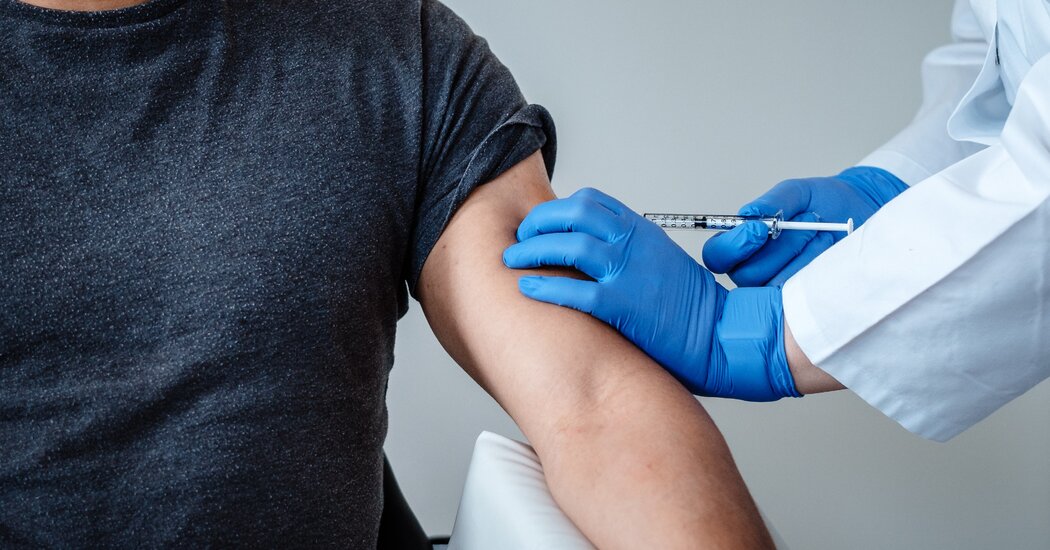The front-runners in the vaccine race seem to be working far better than anyone expected: Pfizer and BioNTech announced this week that their vaccine had an efficacy rate of 95 percent. Moderna put the figure for its vaccine at 94.5 percent. In Russia, the makers of the Sputnik vaccine claimed their efficacy rate was over 90 percent.
“These are game changers,” said Dr. Gregory Poland, a vaccine researcher at the Mayo Clinic. “We were all expecting 50 to 70 percent.” Indeed, the Food and Drug Administration had said it would consider granting emergency approval for vaccines that showed just 50 percent efficacy.
From the headlines, you might well assume that these vaccines — which some people may receive in a matter of weeks — will protect 95 out of 100 people who get them. But that’s not actually what the trials have shown. Exactly how the vaccines perform out in the real world will depend on a lot of factors we just don’t have answers to yet — such as whether vaccinated people can get asymptomatic infections and how many people will get vaccinated.
Here’s what you need to know about the actual effectiveness of these vaccines.
What do the companies mean when they say their vaccines are 95 percent effective?
The fundamental logic behind today’s vaccine trials was worked out by statisticians over a century ago. Researchers vaccinate some people and give a placebo to others. They then wait for participants to get sick and look at how many of the illnesses came from each group.
In the case of Pfizer, for example, the company recruited 43,661 volunteers and waited for 170 people to come down with symptoms of Covid-19 and then get a positive test. Out of these 170, 162 had received a placebo shot, and just eight had received the real vaccine.
From these numbers, Pfizer’s researchers calculated the fraction of volunteers in each group who got sick. Both fractions were small, but the fraction of unvaccinated volunteers who got sick was much bigger than the fraction of vaccinated ones. The scientists then determined the relative difference between those two fractions. Scientists express that difference with a value they call efficacy. If there’s no difference between the vaccine and placebo groups, the efficacy is zero. If none of the sick people had been vaccinated, the efficacy is 100 percent.
A 95 percent efficacy is certainly compelling evidence that a vaccine works well. But that number doesn’t tell you what your chances are of becoming sick if you get vaccinated. And on its own, it also doesn’t say how well the vaccine will bring down Covid-19 across the United States.
What’s the difference between efficacy and effectiveness?
Efficacy and effectiveness are related to each other, but they’re not the same thing. And vaccine experts say it’s crucial not to mix them up. Efficacy is just a measurement made during a clinical trial. “Effectiveness is how well the vaccine works out in the real world,” said Naor Bar-Zeev, an epidemiologist at the Johns Hopkins Bloomberg School of Public Health.
It’s possible that the effectiveness of coronavirus vaccines will match their impressive efficacy in clinical trials. But if previous vaccines are any guide, effectiveness may prove somewhat lower.
The mismatch comes about because the people who join clinical trials are not a perfect reflection of the population at large. Out in the real world, people may have a host of chronic health problems that could interfere with a vaccine’s protection, for example.
The Centers for Disease Control and Prevention has a long history of following the effectiveness of vaccines after they’re approved. On Thursday, the agency posted information on its website about its plans to study the effectiveness of coronavirus vaccines. It will find opportunities to compare the health of vaccinated people to others in their communities who have not received a vaccine.
What exactly are these vaccines effective at doing?
The clinical trials run by Pfizer and other companies were specifically designed to see whether vaccines protect people from getting sick from Covid-19. If volunteers developed symptoms like a fever or cough, they were then tested for the coronavirus.
But there’s abundant evidence that people can get infected with the coronavirus without ever showing symptoms. And so it’s possible that a number of people who got vaccinated in the clinical trials got infected, too, without ever realizing it. If those cases indeed exist, none of them are reflected in the 95 percent efficacy rate.
The Road to a Coronavirus Vaccine
Words to Know About Vaccines
Confused by the all technical terms used to describe how vaccines work and are investigated? Let us help:
-
- Adverse event: A health problem that crops up in volunteers in a clinical trial of a vaccine or a drug. An adverse event isn’t always caused by the treatment tested in the trial.
- Antibody: A protein produced by the immune system that can attach to a pathogen such as the coronavirus and stop it from infecting cells.
- Approval, licensure and emergency use authorization: Drugs, vaccines and medical devices cannot be sold in the United States without gaining approval from the Food and Drug Administration, also known as licensure. After a company submits the results of clinical trials to the F.D.A. for consideration, the agency decides whether the product is safe and effective, a process that generally takes many months. If the country is facing an emergency — like a pandemic — a company may apply instead for an emergency use authorization, which can be granted considerably faster.
- Background rate: How often a health problem, known as an adverse event, arises in the general population. To determine if a vaccine or a drug is safe, researchers compare the rate of adverse events in a trial to the background rate.
- Efficacy: A measurement of how effective a treatment was in a clinical trial. To test a coronavirus vaccine, for instance, researchers compare how many people in the vaccinated and placebo groups get Covid-19. The real-world effectiveness of a vaccine may turn out to be different from its efficacy in a trial.
- Phase 1, 2, and 3 trials: Clinical trials typically take place in three stages. Phase 1 trials usually involve a few dozen people and are designed to observe whether a vaccine or drug is safe. Phase 2 trials, involving hundreds of people, allow researchers to try out different doses and gather more measurements about the vaccine’s effects on the immune system. Phase 3 trials, involving thousands or tens of thousands of volunteers, determine the safety and efficacy of the vaccine or drug by waiting to see how many people are protected from the disease it’s designed to fight.
- Placebo: A substance that has no therapeutic effect, often used in a clinical trial. To see if a vaccine can prevent Covid-19, for example, researchers may inject the vaccine into half of their volunteers, while the other half get a placebo of salt water. They can then compare how many people in each group get infected.
- Post-market surveillance: The monitoring that takes place after a vaccine or drug has been approved and is regularly prescribed by doctors. This surveillance typically confirms that the treatment is safe. On rare occasions, it detects side effects in certain groups of people that were missed during clinical trials.
- Preclinical research: Studies that take place before the start of a clinical trial, typically involving experiments where a treatment is tested on cells or in animals.
- Viral vector vaccines: A type of vaccine that uses a harmless virus to chauffeur immune-system-stimulating ingredients into the human body. Viral vectors are used in several experimental Covid-19 vaccines, including those developed by AstraZeneca and Johnson & Johnson. Both of these companies are using a common cold virus called an adenovirus as their vector. The adenovirus carries coronavirus genes.
- Trial protocol: A series of procedures to be carried out during a clinical trial.
People who are asymptomatic can still spread the virus to others. Some studies suggest that they produce fewer viruses, making them less of a threat than infected people who go on to develop symptoms. But if people get vaccinated and then stop wearing masks and taking other safety measures, their chances of spreading the coronavirus to others could increase.
“You could get this paradoxical situation of things getting worse,” said Dr. Bar-Zeev.
Will these vaccines put a dent in the epidemic?
Vaccines don’t protect only the people who get them. Because they slow the spread of the virus, they can, over time, also drive down new infection rates and protect society as a whole.
Scientists call this broad form of effectiveness a vaccine’s impact. The smallpox vaccine had the greatest impact of all, driving the virus into oblivion in the 1970s. But even a vaccine with extremely high efficacy in clinical trials will have a small impact if only a few people end up getting it.
“Vaccines don’t save lives,” said A. David Paltiel, a professor at the Yale School of Public Health. “Vaccination programs save lives.”
On Thursday, Dr. Paltiel and his colleagues published a study in the journal Health Affairs in which they simulated the coming rollout of coronavirus vaccines. They modeled vaccines with efficacy rates ranging from high to low, but also considered how quickly and widely a vaccine could be distributed as the pandemic continues to rage.
The results, Dr. Paltiel said, were heartbreaking. He and his colleagues found that when it comes to cutting down on infections, hospitalizations and deaths, the deployment mattered just as much as the efficacy. The study left Dr. Paltiel worried that the United States has not done enough to prepare for the massive distribution of the vaccine in the months to come.
“Time is really running out,” he warned. “Infrastructure is going to contribute at least as much, if not more, than the vaccine itself to the success of the program.”



















